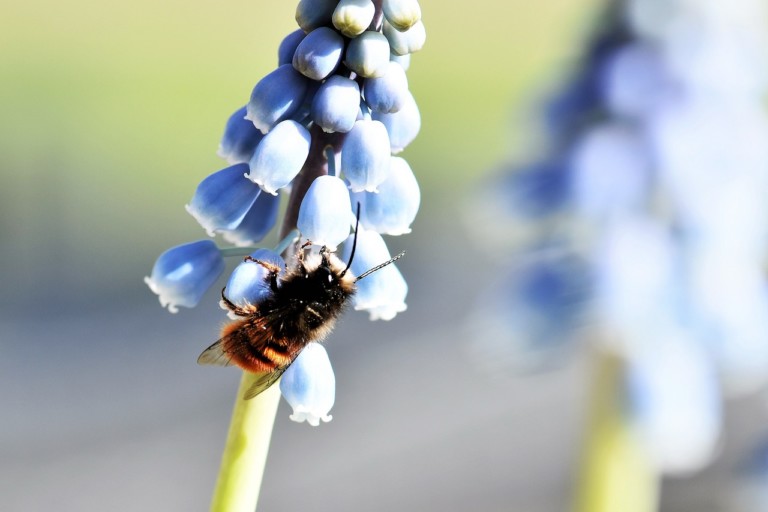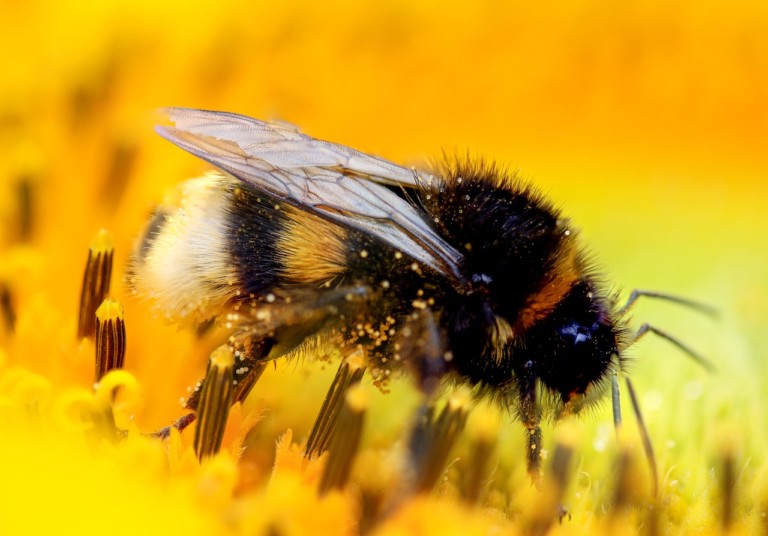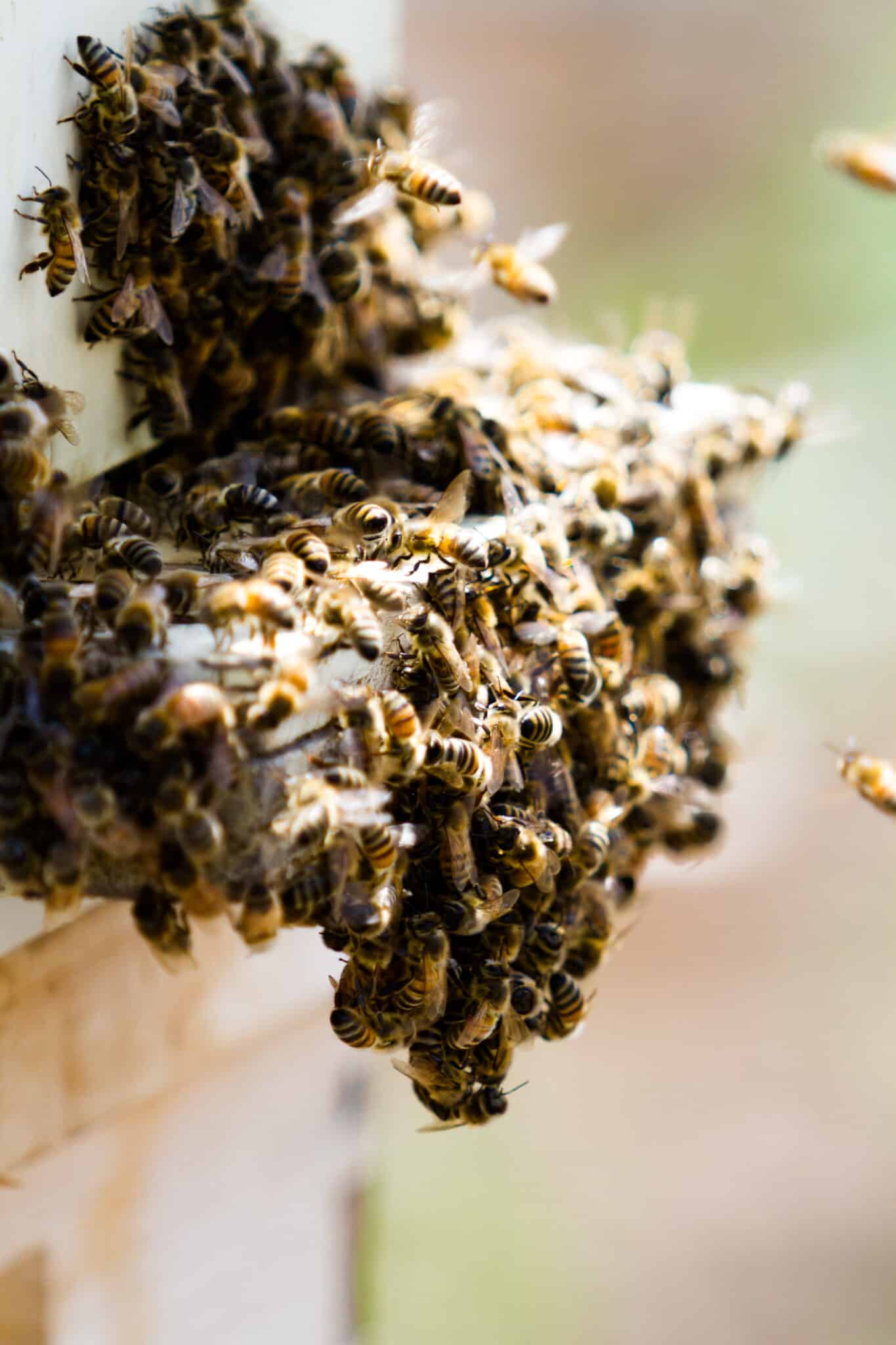Different Species of Bees in the UK
Did you know that there are over 250 different types of bees in the UK? Approximately 90% of these are solitary bees, but we have all sorts of bees with different looks, different habitats, and different behaviours.
The UK’s bees are a vital part of our ecosystem. They pollinate food crops – and crops that are used to feed livestock – as well as trees and wild flowers which are needed to keep our ecosystem intact and thriving. Of course, certain types of bees in the UK also produce honey, and where would our breakfasts be without it?!
Read on for our guide to some of the UK’s most common bee species – and our tips on how to determine when bees can become pests rather than friendly pollinators.
Common Bee Species
The most common bee species in the UK fall into three categories: bumblebees, honeybees and solitary bees. 90% of our bee species are solitary bees. There are 24 different bumblebee species in the UK – and just one type of honeybee can be found on our shores.
Here’s how to recognise some of the most common UK bees.
Solitary Bees
Unlike bumblebees and honeybees, solitary bees – as their name suggests – tend not to live in colonies. They can nest close to each other – sometimes in large numbers – but each female builds her own nest.
Some nest on the ground, some higher up. Their nests can be built using leaves or other plant fibres, floral oils, even their own abdominal secretions! They only spend a few weeks of the year flying around collecting pollen and nectar before they lay their eggs.
One common genus of solitary bees is mining bees, who tend to nest in the ground. They can vary between 5mm and 17mm long, and can be recognised by grooves inside their eyes.
The UK is also home to mason bees, which nest in crevices in walls, in holes in the ground or in bug hotels. They resemble honeybees and lay around 6-12 eggs each year, sealed in a cell with nectar and pollen before they seal the whole nest with mud.
Other types of solitary bee in the UK include cuckoo bees, like the nomad bee, which nest in mining bee nests. The grubs, when they hatch, kill the host grubs and eat their pollen supply. Flower bees are among the first to emerge in spring, while leaf-cutter bees, as the name suggests, cut out small leaf sections with their jaws to build their nests, which they make in hollow plant stems or rotting wood.

Bumblebees
Bumblebees are very sociable and tend to nest in large colonies – each will often have around 200 bees. They are not aggressive, and will only sting if provoked.
One of the most common types is the tree bumblebee, with its black abdomen, ginger thorax and white tail. You may sometimes find them in bird boxes, where they love to nest.
The red-tailed bumblebee can be recognised by its distinctive red tail. Old mammal burrows are popular nesting sites, and you’ll spot them in gardens, parks and anywhere with plenty of wild flowers.
White-tailed bumblebees have a bright yellow collar and a white tail and have a diverse range of habitats, while common carder bees appear in various shades of brown and nest in mossy gardens, disused bird nests and cavities.

Honeybees
Honeybees can be recognised by their bent antennae and their thin, banded abdomen (which can have some colour variations). They only have short tongues so their preference is for open flowers.
Many honeybee hives are man-made and cultivated by beekeepers, but they do also thrive in the wild. They’ll make their nests in hollow trees or in cavities in buildings – and that’s why bee removal services are often needed!
Their colonies can reach sizes of up to 60,000, and they’re the only insects that produce honey. They are also important pollinators, which is why it is important to relocate – not destroy – when a swarm is found in an unwanted place.
Why Some Bees Are Considered Pests
Most types of bees in the UK rarely present problems. They’ll swarm for a few weeks but these swarms soon dissipate: as pollinators, it’s important to allow them to crack on.
Sometimes, though, swarms or hives can end up in problematic places. You might find that bees start nesting inside the walls of your property, or even in the soffits or gutters. Through the smallest of holes, they can colonise attic spaces, too. All of this can cause damage to the structure of your building.
We showed earlier just how large some nests can be – honeybee nests in particular. Whether you’re a residential or a commercial property owner, having bees on your property in such large numbers can cause distress – and you run the risk of you or other occupants being stung. That’s where bee removal services come in.

Getting stung isn’t fun. The need to repair damage caused by bees, their hives, their waste products and their wax and honey isn’t ideal.
But do you have the expertise and equipment needed to remove and relocate them yourself?
If you don’t address the issue of pest bees, they could potentially harm you and the building’s other occupants – both humans and animals. They could compromise the structural integrity of your property, running the risk of hefty repair bills. If it’s honeybees that are the problem, the presence of honey could attract other pests, leaving you with even bigger issues to deal with.
Professional bee removal is the answer.
Professional Bee Removal vs. DIY
Some sources suggest that sprinkling cinnamon around a nest will convince a swarm to relocate. But can you be sure that this will really work?
Others recommend buying a bee trap and placing it near the nest. But will a trap catch them all – and how do you plan on relocating them afterwards?
As well as questions around effectiveness, DIY bee removal methods could also result in painful stings. That’s why we would always recommend opting for professional bee removal services instead.
At Pest Stop Boys, we survey the site to establish entry sites and the size of the hive before we remove the bees in an ethical and humane way. Once removed, we’ll relocate the bees to a safe location – well away from your property, don’t worry! – before securing the entry points and advising you on how to prevent bee nests in the future. Contact us to find out more.
Protecting Bees and Managing Pests
There are plenty of things you can do to help protect and nurture non-pest bee populations. Planting a range of native wildflowers so bees have access to pollen between March and October can keep them well-fed. Leaving a patch of longer grass or including hedges or a compost heap in your garden can provide nesting sites – as can a dedicated “insect hotel”.
You should also avoid blocking nest entrances or destroying them yourself – especially when you know that bees are present. The UK’s bee population has been declining in recent years and, as an important part of our ecosystem, it’s vital that we protect them.
Some pest control companies will use insecticide treatments as standard to get rid of bee swarms and hives – but this should only be an absolute last resort. Instead, choose bee removal services that look to relocate rather than eradicate, protecting our bee population and keeping your property safe.